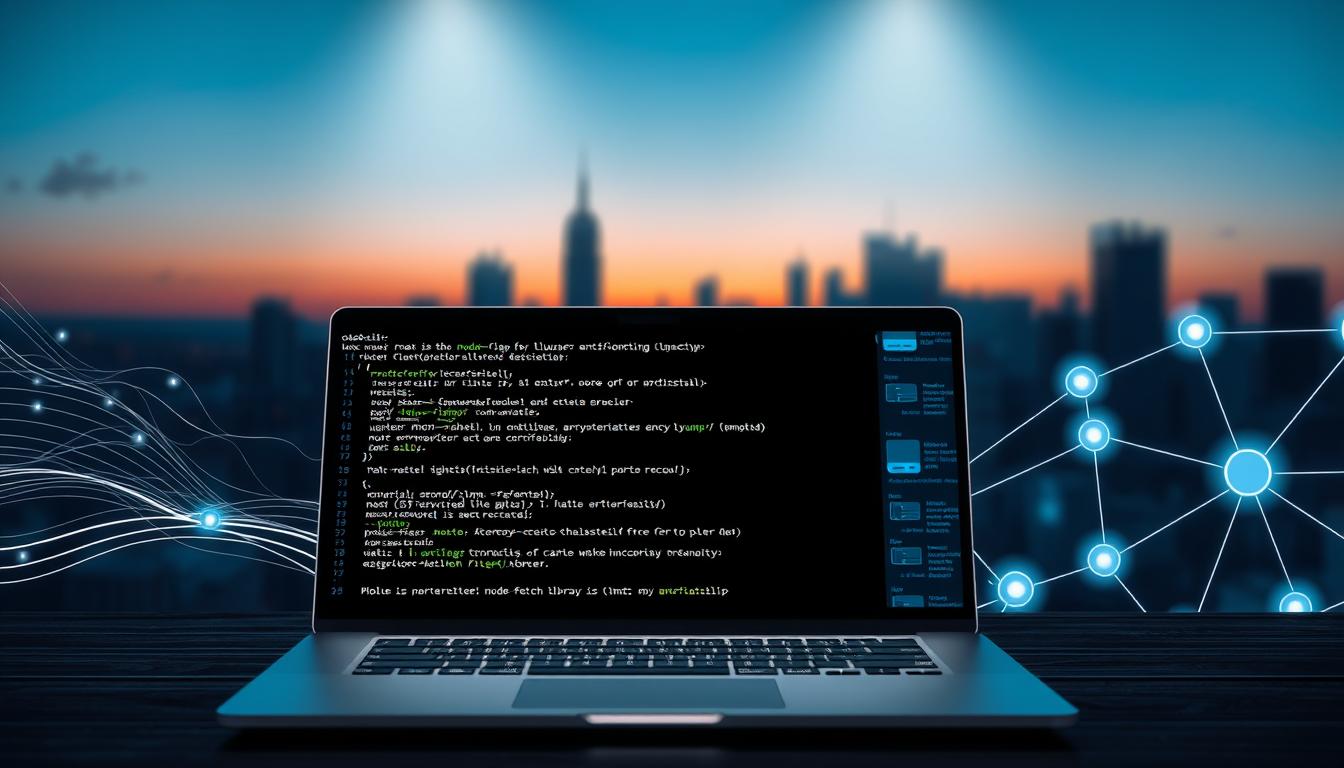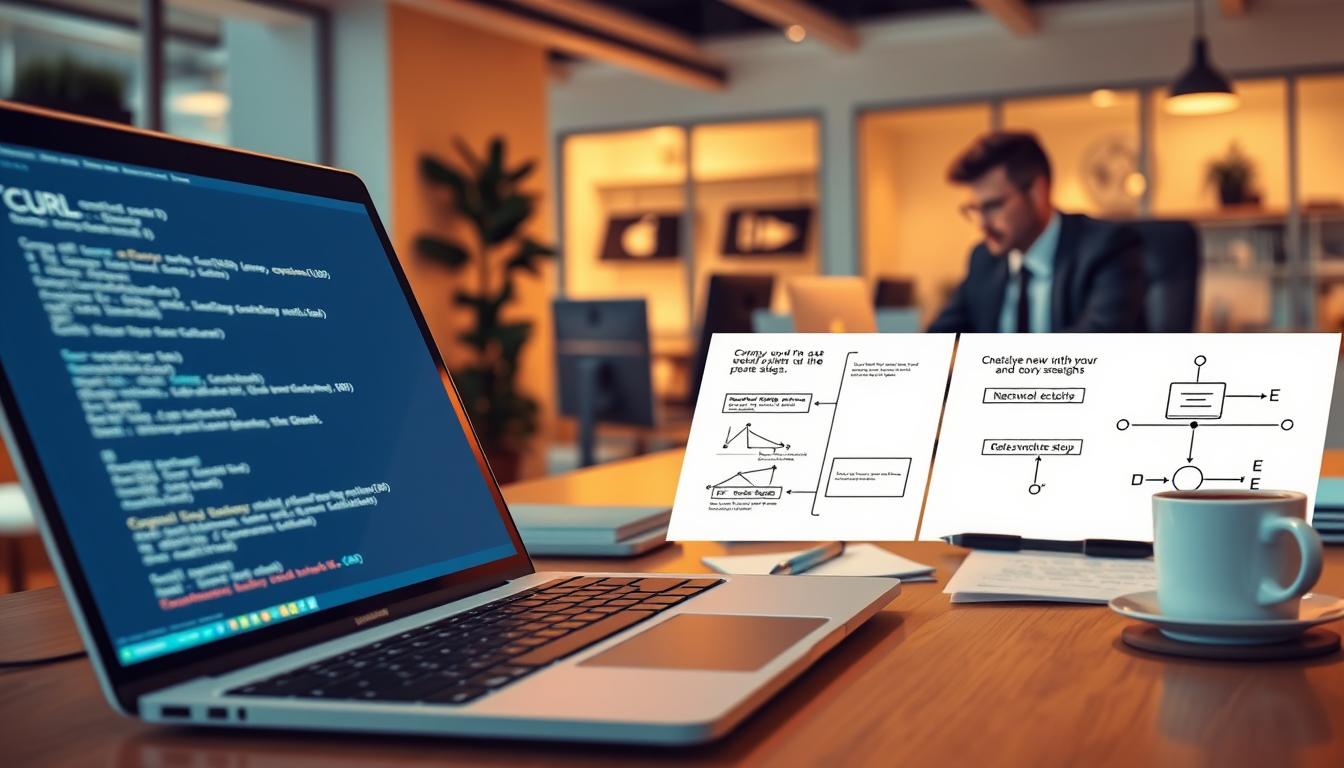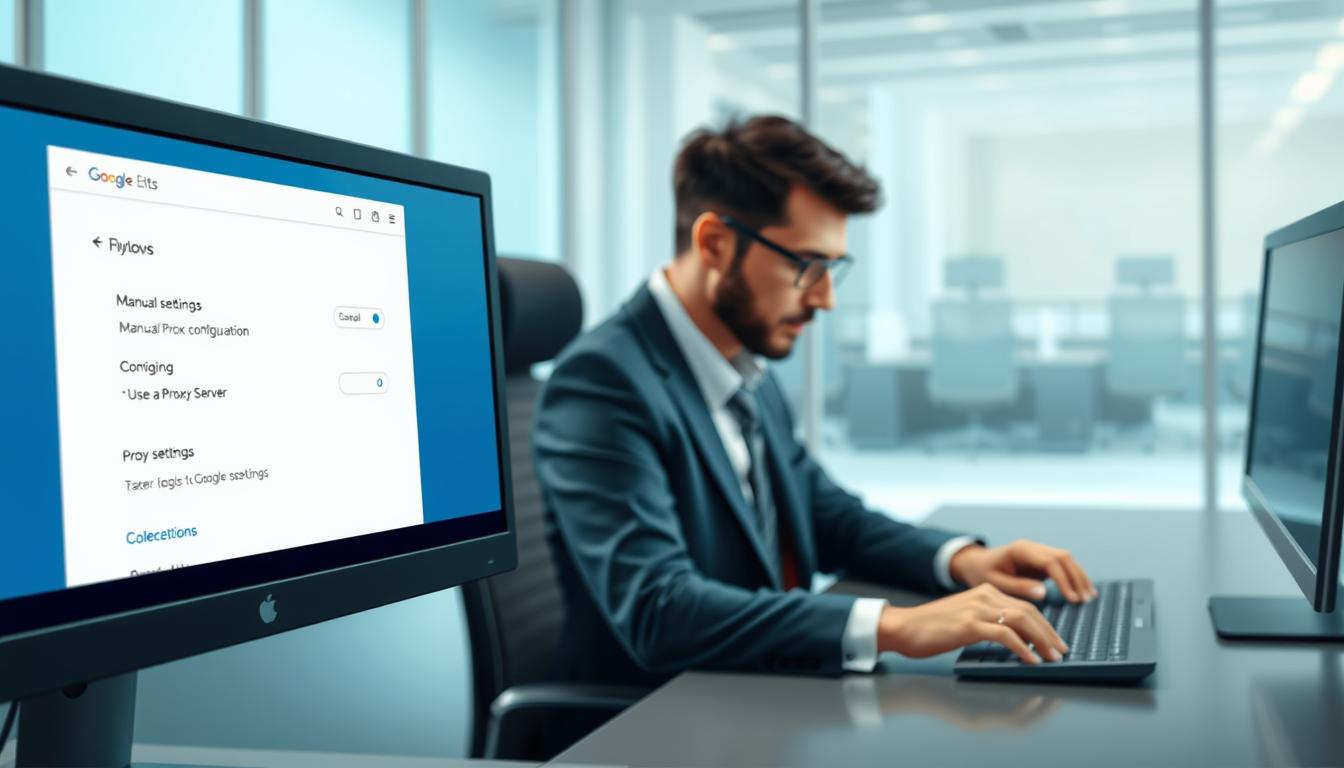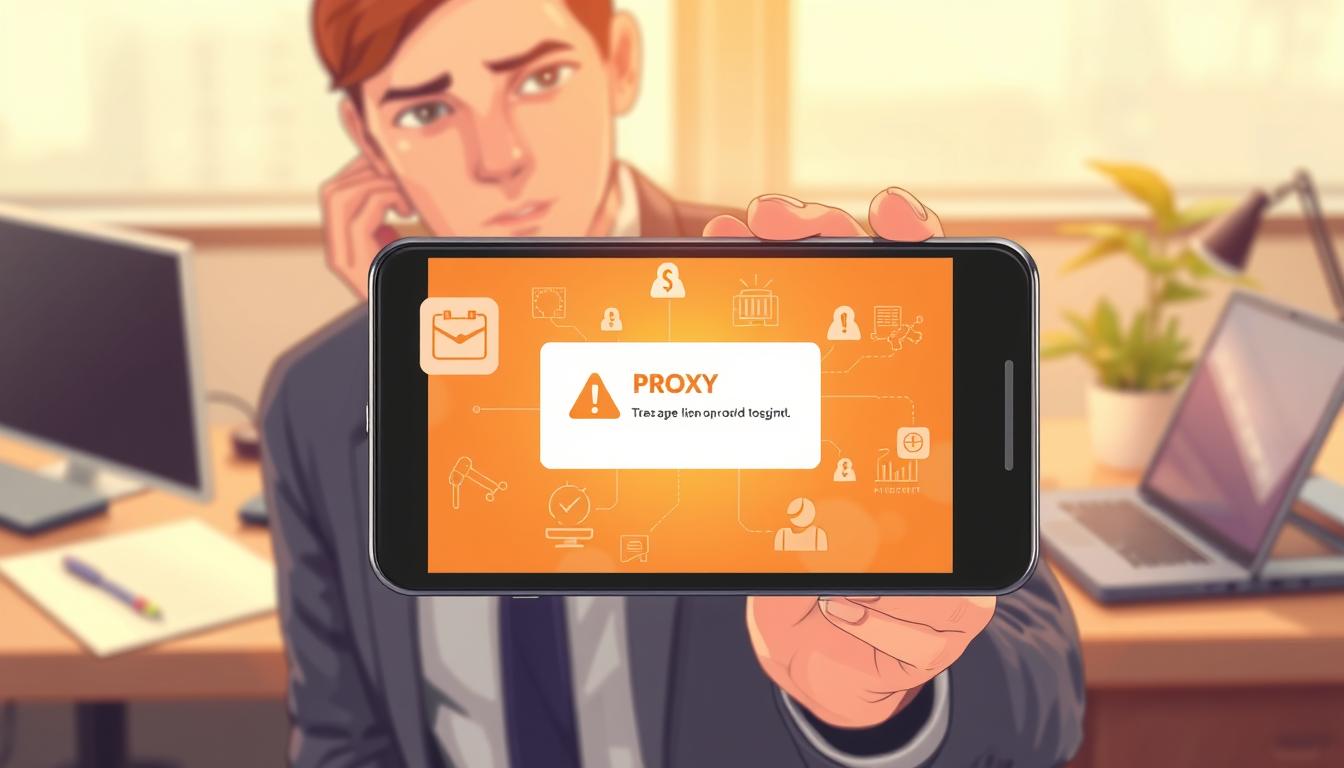FTC disclaimer: This post contains affiliate links and I will be compensated if you make a purchase after clicking on my link.
In today’s fast world, self-service kiosks are key for customers. They let people get services and info easily, cutting down wait times. But, what if you could make your kiosk even better? Kiosk software can turn your Windows devices into secure, easy-to-use self-service spots.
Imagine your customers easily using your kiosk to order and get info. Kiosk software makes this possible. It’s a big hit with small businesses. But, which one is right for you? We’ll find out in this guide.
Are you ready to see the top 7 kiosk software solutions? They can take your business to new levels. Let’s explore how to make self-service smooth and improve customer happiness.
Key Takeaways
- Kiosk software turns Windows devices into secure, self-service spots for customers.
- Interactive kiosks make customer experience better by cutting wait times and offering easy access to services.
- Windows kiosk software is a cost-effective way for small businesses to create custom, interactive kiosks.
- Kiosk software has features like easy-to-use interfaces, system integration, and strong security.
- Using kiosk software can make your business more efficient, save money, and boost customer loyalty.
What is Kiosk Software?
Kiosk software lets users interact with touchscreen computers for certain tasks. It offers quick access to info, services, and functions like printing and payment. In businesses, it helps speed up customer service and follow safety rules for touchless interactions.
Definition and Overview
Kiosk software is the digital platform for self-service terminals. It lets customers use a business’s products and services without staff help. It’s easy to use and fits each business’s needs.
Importance in Business Context
For companies, a good Kiosk Management System or Touchscreen Kiosks brings many benefits. It makes customer service faster, cuts down wait times, and meets safety rules. It also helps improve the customer experience.
Choosing the right kiosk software is key. It must work well with current hardware and security. By looking at design, integration, and security, businesses can find a solution that adds value and supports their goals.
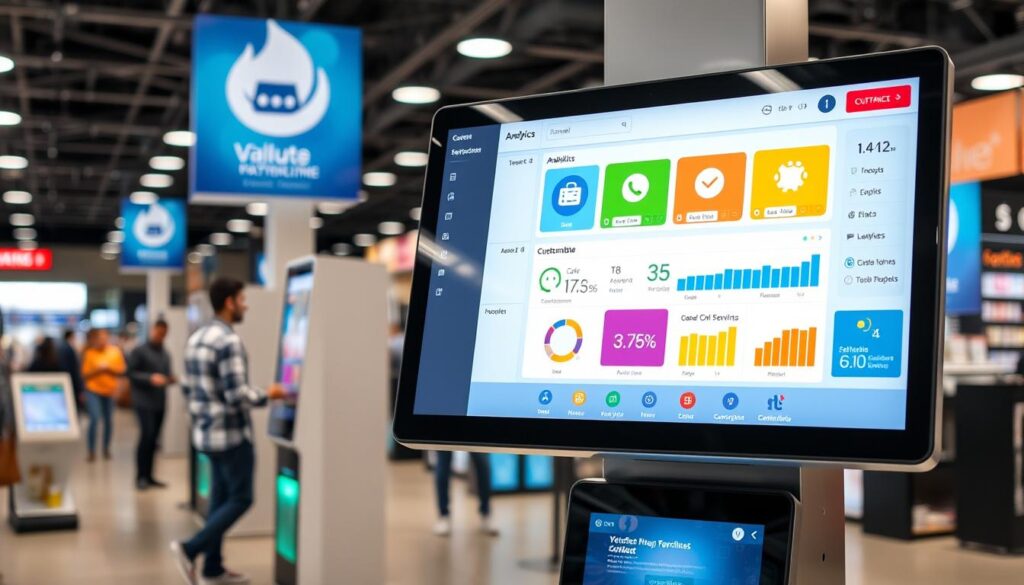
Key Features to Look for in Kiosk Software
Businesses want to improve customer experience and work better. Choosing the right Kiosk Content Management and Digital Signage Kiosks software is key. Look for these important features to find the best fit for your business.
User Interface Design
The kiosk software’s user interface should be easy and fun to use. It should let customers move through your offerings smoothly. Choose software that lets you customize the interface to fit your brand and improve the customer experience.
Integration Capabilities
Good kiosk software should work well with your current systems. This includes POS, inventory, and CRM systems. It helps your operations run smoothly and efficiently.
Security Features
Kiosk software must keep your customer data safe and your devices secure. Look for strong security features like encryption and device locking. This ensures your kiosks are safe and follow industry rules.
| Feature | Importance | Benefits |
|---|---|---|
| Centralized Configuration | Enables easy management of multiple kiosks from a single platform | Streamlines device updates, content changes, and remote troubleshooting |
| Robust Security | Protects against unauthorized access and data breaches | Ensures compliance with industry standards and safeguards customer information |
| Content Management | Allows for dynamic display of videos, images, and interactive web pages | Enhances customer engagement and the ability to showcase products and services |
| User Interface Customization | Enables branding and personalization to match your business identity | Provides a seamless and memorable customer experience |
| Analytics and Reporting | Offers insights into user behavior and campaign performance | Supports data-driven decision-making and continuous improvement |
When picking kiosk software, think about ease of use, how it grows with your business, cost, and support. Make sure it meets your changing business needs.
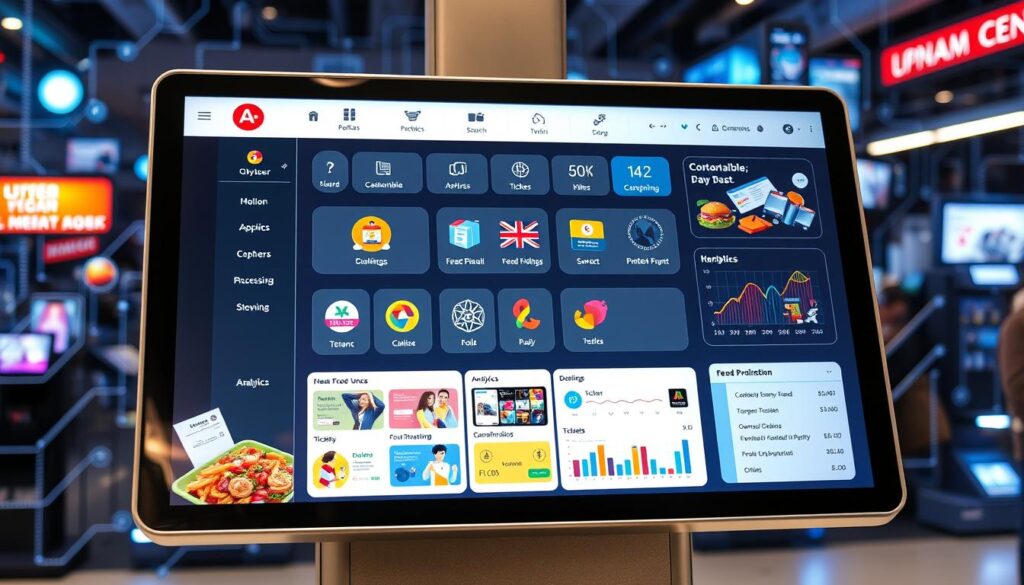
Benefits of Using Kiosk Software
Kiosk software is changing the game for businesses. It brings Interactive Kiosks and Self-Service Kiosks to the forefront. These tools offer many benefits that can take your business to new heights.
Enhanced Customer Experience
Kiosk software makes it easier for customers to get what they need. It creates a more personal and fun experience. This means less waiting and fewer customer service needs, making customers happier.
Increased Operational Efficiency
Kiosk software makes your business run smoother. It cuts down on labor costs and boosts security. Plus, it lets you take payments anywhere, without needing cash registers.
A Forrester study found self-service tech can cut labor costs by 30%. Also, over 60% of grocery stores in the US and UK think customers will leave if they don’t have self-service kiosks.
Using kiosk software helps your business offer great service and run more efficiently. It’s a key to growing and succeeding in the long run.
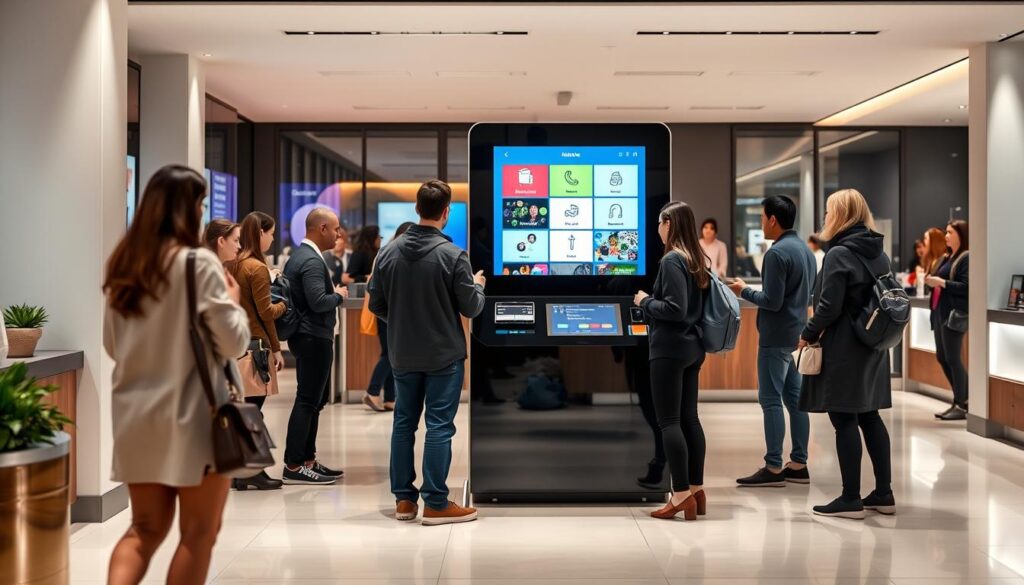
“Over 70% of customers prefer using self-service kiosks, leading to reduced costs by eliminating the need for a large customer service team.”
Top 7 Kiosk Software Solutions
In the fast-changing world of kiosk tech, businesses have many choices for kiosk software. These solutions offer easy-to-use interfaces and strong security. They help improve your customer service and make your operations smoother. Let’s look at the top 7 kiosk software solutions that can boost your business.
VantageMDM
VantageMDM is a flexible kiosk software that manages devices well. It also lets you customize content and control devices remotely. Its easy-to-use design helps businesses create engaging kiosk experiences for customers.
OptiSigns
OptiSigns is a cloud-based kiosk software with many features. It has content management, remote access, and advanced analytics. Its simple design and easy integration make it a favorite for businesses.
NoviSign
NoviSign is a Windows Kiosk Software that focuses on visual experiences. It has rich media features and an easy content management system. NoviSign helps businesses create eye-catching kiosk displays that draw in customers.
Linkitsoft
Linkitsoft is a wide-ranging kiosk software for many industries. It has strong security, flexible integration, and central device management. It’s a top pick for businesses needing a dependable and growing kiosk platform.
Connecteam
Connecteam is a kiosk software for employee engagement and productivity. It has a user-friendly interface and advanced features. Connecteam helps businesses use kiosks for HR tasks, better communication, and a better employee experience.
SiteKiosk
SiteKiosk is a top kiosk software with many features. It manages devices, schedules content, and monitors remotely. Its easy design and wide range of features make it a favorite for businesses.
Hexnode UEM
Hexnode UEM is a unified endpoint management solution with kiosk features. It has advanced security, remote access, and flexible deployment. Hexnode UEM is great for businesses to manage their kiosk devices centrally.
Choosing the Best Kiosk Software for your business is key. Look at pricing, features, and integration to match your needs and budget. The right kiosk software can improve customer experience, efficiency, and business growth.
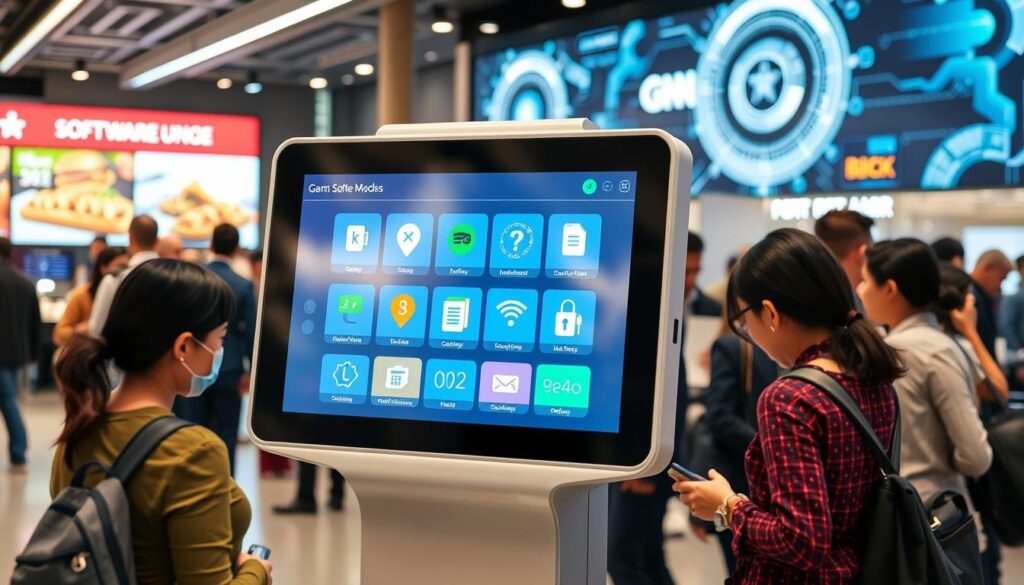
Kiosk Software for Retail Businesses
In the fast-changing retail world, kiosk software is a key tool. It makes customer experiences better and business operations smoother. Retail stores use kiosks for self-service, like Point of Sale Kiosks for checkout and Digital Signage Kiosks for interactive displays and promotions.
Popular Retail Use Cases
Kiosk software helps with many tasks in retail, including:
- Self-service checkout stations that cut down wait times and boost happiness
- Interactive product info kiosks for exploring features and making choices
- Kiosks for customer feedback and loyalty programs to strengthen bonds
- Digital ordering systems for placing orders and customizing choices
Choosing the Right Solution
When picking kiosk software, think about how it fits with your current systems. Look at its integration with Point of Sale Kiosks and Digital Signage Kiosks. Also, check its inventory management and ability to show promotions. The right software can make your business better and your customers happier.
“Kiosk software has been a game-changer for our retail business, allowing us to streamline checkout, engage customers, and gather valuable insights to improve our offerings.”
Kiosk Software for Restaurants and Hospitality
In the fast world of restaurants and hospitality, self-service kiosks and interactive kiosks change how we experience dining. Kiosk software made for this field makes ordering and paying easier. It also cuts down wait times and makes customers more engaged.
Order and Payment Processing
Kiosk software has cool features like customizable menus and support for many payment types. For instance, Mews makes setting up easy and lets you brand the kiosk. This makes the customer’s visit better.
Customer Engagement Strategies
To get customers to return, kiosk software can help with loyalty programs and personalized suggestions. GuestJoy works with Google and Tripadvisor for reviews and upselling. Altitude uses kiosks for room upgrades or upsells, making the guest experience better.
Other cool kiosk software solutions like PARTTEAM & OEMKIOSKS, Roommatik, REDYREF, Metasphere, and Abitari have features to help restaurants and hotels. They make operations smoother and improve customer experience.
The perks of using self-service kiosks and interactive kiosks are obvious. Restaurants see sales go up by 20% or more with kiosks. Kiosk software partners in the food and drink ordering market have ready-to-use software for this industry.
“Kiosks provide actionable data that give insights into customer preferences, such as peak ordering times, popular meal combinations, and frequently customized items.”
By using kiosk software, restaurants and hotels can make the customer experience better. They can also work more efficiently and make more money.
Kiosk Software for Healthcare
Kiosk software makes patient registration and check-in easier. It helps collect medical history and insurance info. It also makes administrative tasks smoother. Healthcare kiosks work with electronic health records and keep data safe.
They support many languages. Wayfinding kiosks help people find their way in big healthcare places.
Patient Check-In and Management
Healthcare kiosks are becoming more popular. SaaS-based solutions are the top choice. They are also used on iPad, iPhone, and Android devices.
These kiosks help with patient check-in and registration. There are many software options for this.
For example, HCA has over 400 kiosks in waiting rooms. Patients check in by choosing a language, swiping a card, and saying why they’re there. Meridian’s kiosks also make check-in faster, making patients happier.
Streamlining Administrative Tasks
Kiosk software helps healthcare staff by making tasks easier. It handles patient check-in, electronic medical records, and more. This makes healthcare better and more efficient.
Kiosk Group’s solutions are tough and easy to clean. They meet ADA standards and can be made more accessible.
Self-service kiosks are used for many things in healthcare. They help with check-in, wayfinding, and more. Kiosk Pro software makes managing these kiosks easy.
Using kiosk software in healthcare improves patient care and efficiency. It makes healthcare better for everyone.
| Feature | Benefit |
|---|---|
| Patient Check-In and Registration | Streamlined processes, reduced wait times, improved patient satisfaction |
| Electronic Health Record (EHR) Integration | Efficient data collection, secure data handling, compliance with privacy regulations |
| Multilingual Support | Improved accessibility and inclusivity for diverse patient populations |
| Wayfinding and Information Kiosks | Enhanced patient and visitor navigation, reduced administrative burden |
| Telemedicine Consultations | Increased access to healthcare services, remote patient engagement |
How to Choose the Right Kiosk Software
Choosing the right kiosk software is key for your business. You need to know what you need and who to get it from. This way, you’ll find a system that works for you now and in the future.
Assessing Your Business Needs
First, figure out how you want to use your kiosk software. Think about who will use it, what it will do, and how it will work with your current systems. This helps you know what features are most important.
- Think about what tasks your kiosks will do, like checking in customers or processing orders.
- Decide if you need to make the kiosk look like your brand.
- See if you need to connect it with other software, like CRM systems or payment gateways.
Evaluating Software Providers
After knowing what you need, start looking at Kiosk Management System providers. Choose ones with experience in your field and who can offer solutions just for you.
- Check if the vendor has good experience and happy customers.
- Make sure the software is easy for your team and customers to use.
- Look at the software’s security, like encryption and access controls.
- See if the vendor offers support and updates to keep your software running smoothly.
By understanding your needs and looking at providers carefully, you can pick the Kiosk Management System that’s right for you. This choice will help your business grow.
Implementing Kiosk Software in Your Business
Adding kiosk software to your business can make things better for customers and work more smoothly. But, it needs careful planning and doing. Here’s how to make your kiosk setup go well:
Steps for Successful Implementation
- Define Clear Objectives: Know what you want from your kiosk, like better customer service or more sales. These goals help pick the right software and plan how to use it.
- Conduct a Needs Assessment: Check what your business needs, like the right hardware, security, and how it fits with what you already use.
- Choose the Right Kiosk Software: Pick a kiosk software that fits your goals and needs. Think about how easy it is to use and if it can grow with your business.
- Plan the Deployment: Make a detailed plan for setting up your kiosk. Include when, who, and what needs to be done, from setting up hardware to adding content.
- Ensure Hardware Compatibility: Make sure the kiosk hardware works well with your chosen Kiosk Content Management software. This avoids problems.
- Customize the User Experience: Make the kiosk look and work like your brand. This makes the Interactive Kiosks better for your customers.
- Implement Security Measures: Add strong security, like locking down devices and checking who’s using them. This keeps your data safe.
Staff Training and Support
Training your staff well and having ongoing support is key for your kiosk’s success. Make sure your team knows how to keep the kiosks running smoothly. This includes updating content, fixing problems, and helping customers. Also, get help from your kiosk software provider for any tech issues and to keep your system updated.
By following these steps and focusing on training and support, you can smoothly add your Kiosk Content Management and Interactive Kiosks solution. This will improve your business’s customer service and how it works.
Future Trends in Kiosk Software
The world of Touchscreen Kiosks and Digital Signage Kiosks is changing fast. New tech and what people want are driving these changes. Soon, kiosk software will change how we use these self-service tools.
Advancements in Technology
Artificial Intelligence (AI) and Machine Learning (ML) will be big in kiosk software soon. They will make kiosks more personal, changing based on what each user likes. AI helpers will give advice, make buying easier, and make things more efficient in stores and hospitals.
Biometric tech like face scans and fingerprints will also grow in kiosk security. These new methods will keep transactions safe and make using kiosks easier and safer, especially after the pandemic.
Changing Consumer Expectations
People now want kiosks that are easy to use and look good. Kiosk makers are making them more user-friendly, adding fun features, and using Augmented Reality (AR) for cool experiences. These changes will make customers more interested and engaged in stores, hotels, and travel spots.
Kiosks are also moving into new areas like healthcare, transport, and schools. This shows how useful and adaptable these tools can be. As needs and wants change, kiosk software will need to be flexible and tailored to different industries.
| Trend | Impact | Potential Application |
|---|---|---|
| AI and ML Integration | Personalized experiences, enhanced efficiency | Retail, healthcare |
| Biometric Authentication | Improved security, contactless interactions | Retail, hospitality, government |
| Augmented Reality | Immersive and engaging experiences | Retail, tourism, education |
| Kiosk Expansion into New Sectors | Versatility and adaptability to diverse needs | Healthcare, transportation, education |
As Touchscreen Kiosks and Digital Signage Kiosks keep evolving, businesses need to keep up. They must make sure their kiosks stay ahead and meet the changing needs of their customers.
Case Studies of Successful Kiosk Software Implementation
Self-Service Kiosks and Interactive Kiosks have changed how businesses meet customers. Looking at real examples shows the benefits and lessons of this tech.
Real-World Examples
In healthcare, a big hospital network had slow patient check-ins. They tried tablets but switched to Kiosks. They started with six kiosks and grew to 135 across many places.
They plan to add more kiosks in 2024, showing big growth. This shows how kiosks can help a lot.
In retail, a big grocery store used Interactive Kiosks to improve shopping. These kiosks made checkout faster and offered special deals. This led to more sales and more money made.
Lessons Learned
These examples teach us important lessons for using kiosk software:
- Designing for users is key: The hospital’s first try with tablets shows the need to know what users want.
- Being able to grow and change is important: The hospital’s success in adding more kiosks shows the need for flexibility.
- Accurate and reliable data is crucial: The hospital’s kiosks helped make sure patient info was right.
- Kiosks need to last and be cost-effective: The grocery store’s kiosks lasted years without needing to be replaced, showing they were good value.
By learning from these examples, businesses can use Self-Service Kiosks and Interactive Kiosks better. This tech can make customer experiences better and help businesses work more efficiently.
Conclusion: Selecting the Best Kiosk Software for Your Business
Choosing the right kiosk software is key for your business. You need to look at what your business needs, the features of different software, and how it affects customers and work flow. By understanding your needs, looking at top providers, and talking to them, you can pick the best software for your goals.
Recap of Key Takeaways
This guide shows why knowing your business needs is crucial. It also highlights the importance of software features like design, integration, and security. Using kiosk software can improve customer experience and work flow.
Next Steps for Implementation
If you want to use Best Kiosk Software or a Kiosk Management System, start by figuring out what you need. Then, compare the top software options. Finally, talk to providers to find the best one for you. These steps will help you smoothly add kiosk technology to your business. It will help engage customers, make work easier, and grow your business.

